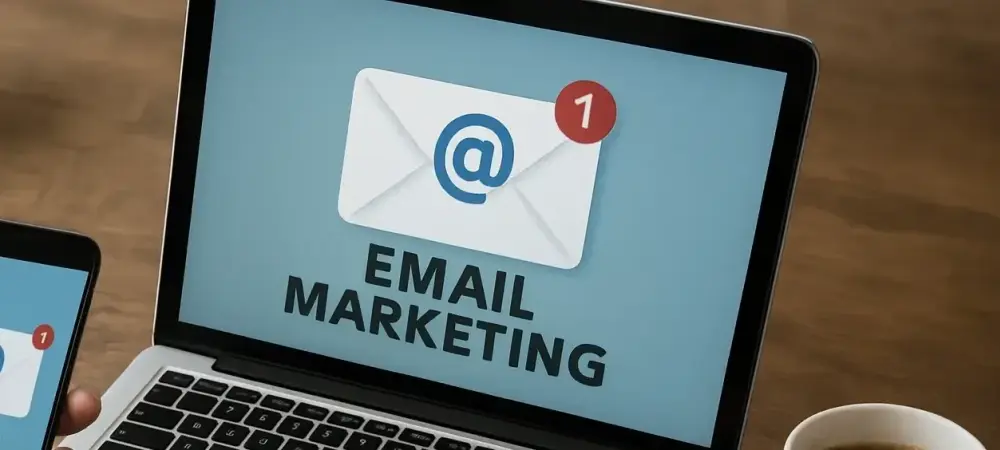In the fast-paced digital world, email marketing remains a dynamic and essential tool for businesses to forge connections with their audiences. With advancements in technology and changing consumer preferences, email marketing strategies must evolve to remain effective. Innovations in content delivery, increased personalization, and strategic use of technology are more pertinent than ever. This guide delves into best practices for mastering email marketing in today’s landscape, offering actionable insights for those aiming to elevate their campaigns.
Unveiling Email Marketing Essentials for 2025
As businesses strive to capture attention in an overcrowded digital space, email marketing stands out for its ability to connect directly with consumers. It has transformed from basic promotional blasts to sophisticated, personalized experiences that resonate with recipients. This shift requires marketers to adapt their approaches, focusing on refining content and leveraging new marketing technologies. Key focus areas such as audience segmentation, integration of Artificial Intelligence (AI), and creative content development have taken precedence.
The modern email marketing landscape is characterized by change, driven by the evolving needs of consumers and technological advancements. As marketers seek to implement cutting-edge strategies, understanding the essentials of today’s environment becomes crucial. This involves not only recognizing traditional components like content and design but also exploring future-forward tactics that ensure strategic success.
Importance of Adhering to Best Practices
Incorporating best practices in email marketing is essential for achieving impactful results. Adhering to these guidelines ensures not only compliance with industry regulations but also optimization of campaign reach and effectiveness. Strict adherence to rules, such as GDPR, is necessary to protect recipient privacy and minimize legal risks, fostering a trustworthy image for the brand. Best practices in email marketing offer multiple advantages, including enhanced recipient engagement and strengthened customer relationships. By following these, businesses can avoid pitfalls like spam classifications while increasing open and click rates. Complying with best practices aligns marketing efforts with desired outcomes, creating meaningful interactions and conversions that drive value.
Actionable Steps for Implementing Best Practices
Segmentation and Personalization as Cornerstones
One of the most effective strategies in email marketing is audience segmentation combined with personalized messaging. Recognizing the unique preferences and behaviors of recipients allows for tailored content delivery that speaks individually to each segment. This not only increases engagement but also fosters deeper connections, improving overall campaign performance. A prime example of successful segmentation is Company X’s strategy to target specific audience groups. By doing so, the company increased its engagement rates significantly, demonstrating the power of personalization. Such approaches lead to higher conversion rates and loyal customer bases, achieving marketing goals more effectively.
Leveraging Automation and AI
Incorporating automation and AI into email marketing strategies enhances efficiency and effectiveness, allowing for a more responsive and streamlined approach. Automation tools can manage repetitive tasks like welcome emails and follow-up sequences with precision, while AI offers insights through data analysis, optimizing content delivery and engagement timing.
Through an analysis of Brand Y’s use of AI tools, it becomes evident that statistical feedback on marketing campaigns significantly improves performance. These technologies enable brands to adapt quickly to consumer needs, maintain relevance, and enhance the impact of email communications.
Crafting High-Quality Content with Creativity and Data
Creating compelling content that balances creativity and data-driven insights is crucial for capturing and retaining audience interest. By leveraging data to understand audience preferences, marketers can craft messages that resonate while remaining innovative and engaging. Using both analytics and creative strategies can lead to exceptional execution of campaigns.
A real-life example of this involves a company that utilized its creative content strategies to increase click-through rates significantly. By focusing on data insights and creativity, they offered content that was not only engaging but also highly relevant to their consumer base, showing the power of this balanced approach.
Conclusion: Navigating the 2025 Email Marketing Landscape
As the email marketing field continues to evolve, embracing new strategies and technologies remains imperative for success. Business adaptability to emerging trends helps maintain engagement and achieve marketing objectives. Implementers of email marketing must focus on future-proof strategies, exploring AI and automation as valuable assets. Understanding audience nuances and crafting personalized content are key drivers of successful campaigns. Keeping abreast of industry standards and trends ensures ethical practices, reinforcing brand integrity and trust. Through these strategic efforts, businesses position themselves to thrive in a competitive digital marketplace.

